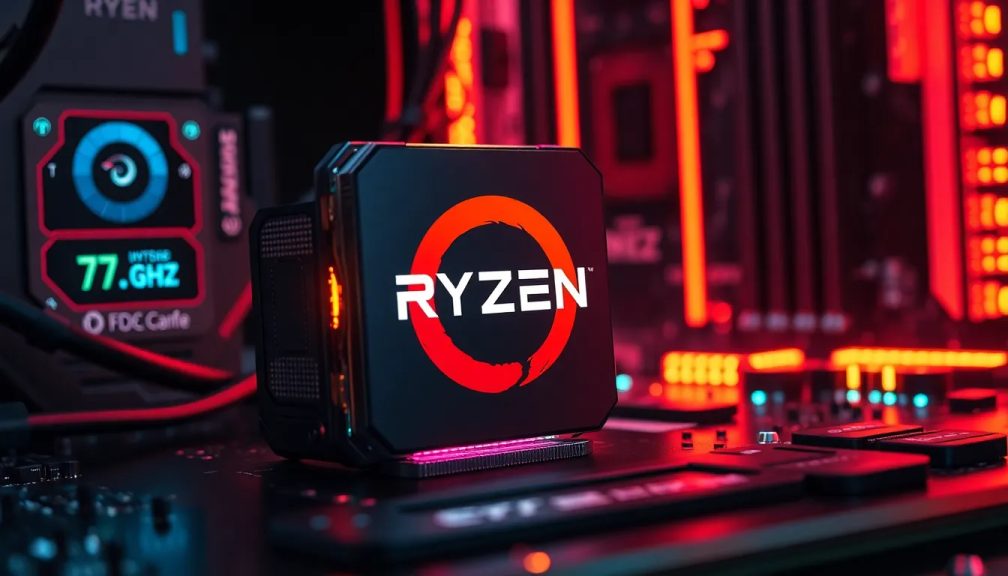Ryzen 7 9800X3D achieves impressive 7.3 GHz performance

In the constantly evolving world of computer hardware, few achievements generate as much excitement as breakthroughs in processor speeds. Recently, a new record was set for the Ryzen 7 9800X3D, reaching an astonishing frequency of 7.3 GHz, thanks to the efforts of renowned overclocker HiCookie and Gigabyte. This incredible feat not only showcases the potential of the Ryzen architecture but also raises intriguing questions about the limits of current CPU technology.
As we delve into this remarkable achievement, we'll explore the specifications that made this overclock possible, the challenges faced during the process, and what this means for enthusiasts and gamers alike.
Understanding the Ryzen 7 9800X3D's Overclocking Potential
The Ryzen 7 9800X3D is a powerful processor designed by AMD, featuring a robust architecture that allows for impressive performance, especially in gaming and multitasking scenarios. Its intrinsic capabilities are what make it a prime candidate for overclocking, but the recent achievement of 7.3 GHz has pushed its limits even further.
Overclocking involves running a CPU at higher speeds than its base clock frequency, which can lead to significant performance gains. However, this process requires careful adjustments to several parameters, including:
- VCore voltage: This is critical for stability at higher frequencies.
- Multiplier settings: Adjusting the CPU's multiplier can significantly increase clock speeds.
- Cooling solutions: Adequate cooling is essential for maintaining performance without thermal throttling.
Breaking the 7.3 GHz Barrier: The Process
To reach the unprecedented frequency of 7.3 GHz, HiCookie employed a series of meticulous strategies. The VCore was pushed to a staggering 1.631 volts, a level that required extreme cooling solutions to avoid overheating. The use of liquid nitrogen (LN2) was necessary to maintain stable temperatures during the overclocking process.
The specific configurations used for this record included:
- Multiplier set to x71
- Bus frequency adjusted to 101.57 MHz
- Deactivation of SMT (Simultaneous Multithreading) to ensure stability
These adjustments were crucial, as the inherent stability of the CPU can be compromised when pushed to such extreme limits. Additionally, the choice of a dedicated overclocking motherboard, the Gigabyte Aorus X870 Tachyon, played a significant role in achieving this milestone.
The Technical Challenges of Extreme Overclocking
While reaching 7.3 GHz is a remarkable achievement, it is not without its challenges. Extreme overclocking comes with a host of technical hurdles that require expertise and experience to navigate. Among these challenges are:
- Thermal management: Maintaining optimal temperatures is critical, as excessive heat can lead to CPU failure.
- The cold bug: At sub-zero temperatures, some CPUs exhibit instability, making it necessary to find a balance between cold and hot.
- Power supply considerations: A stable and powerful PSU is essential to provide the necessary voltage and current during overclocking.
HiCookie's experience in these areas allowed him to successfully manage the delicate balance required for such extreme conditions, showcasing his skill and knowledge in the field of overclocking.
Performance Metrics: Cinebench and Beyond
After achieving the record frequency, the Ryzen 7 9800X3D was tested using Cinebench 2024, a popular benchmarking tool for assessing CPU performance. Under standard conditions, the processor achieved a frequency of 6648 MHz with all cores and hyperthreading activated, resulting in a score of 1733 points.
This score indicates a significant improvement when compared to typical benchmarks. For instance, a Ryzen 7 9800X3D overclocked with Precision Boost Overdrive (PBO) scores around 1339 points, translating to a performance increase of 29.5% for only a 25.5% increase in frequency. This demonstrates the benefits of manual overclocking over auto-optimizations.
What This Means for Gamers and Enthusiasts
The achievement of breaking the 7.3 GHz barrier is not just a technical marvel; it has practical implications for gamers and computing enthusiasts. Higher clock speeds can lead to:
- Improved gaming performance: Many modern games benefit from higher single-core performance.
- Enhanced multitasking capabilities: Increased speeds allow for better handling of concurrent applications.
- Future-proofing: As software becomes more demanding, having a high-performance CPU can extend the lifespan of a system.
As more users look to push their hardware to new heights, advancements in cooling technology and motherboard design will be critical in supporting these endeavors.
For those interested in diving deeper into the world of overclocking, several resources can provide additional insights and guidance. For instance, a video titled "Ryzen 9800X3Ds are Running TOO HOT & Dying?! - Here's ..." explores the thermal challenges associated with high-performance CPUs and offers tips for managing heat effectively.
This recent achievement in overclocking not only highlights the capabilities of the Ryzen 7 9800X3D but also inspires a new generation of enthusiasts to experiment and push the boundaries of CPU performance. As technology continues to advance, the potential for even greater achievements looms on the horizon.




Leave a Reply